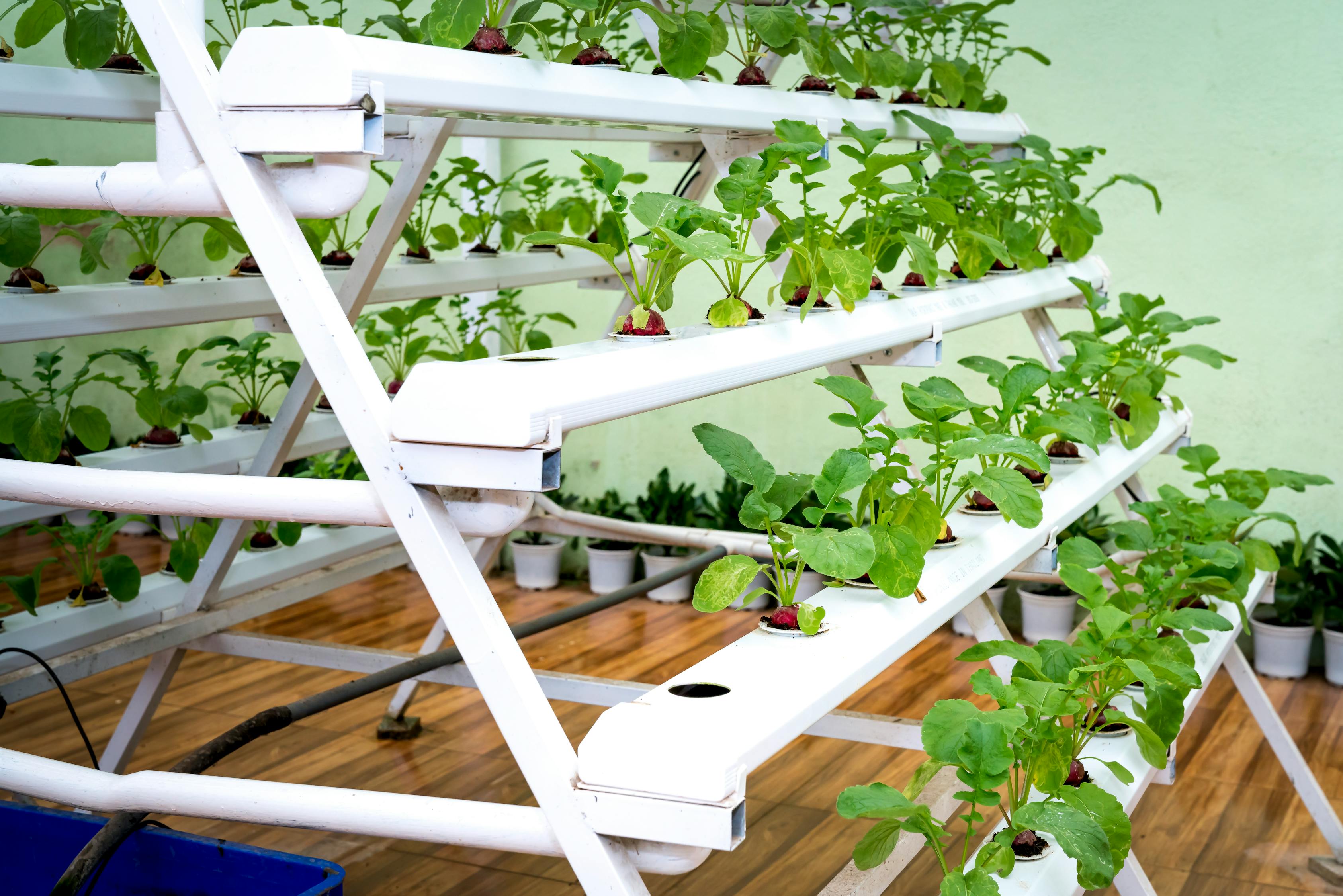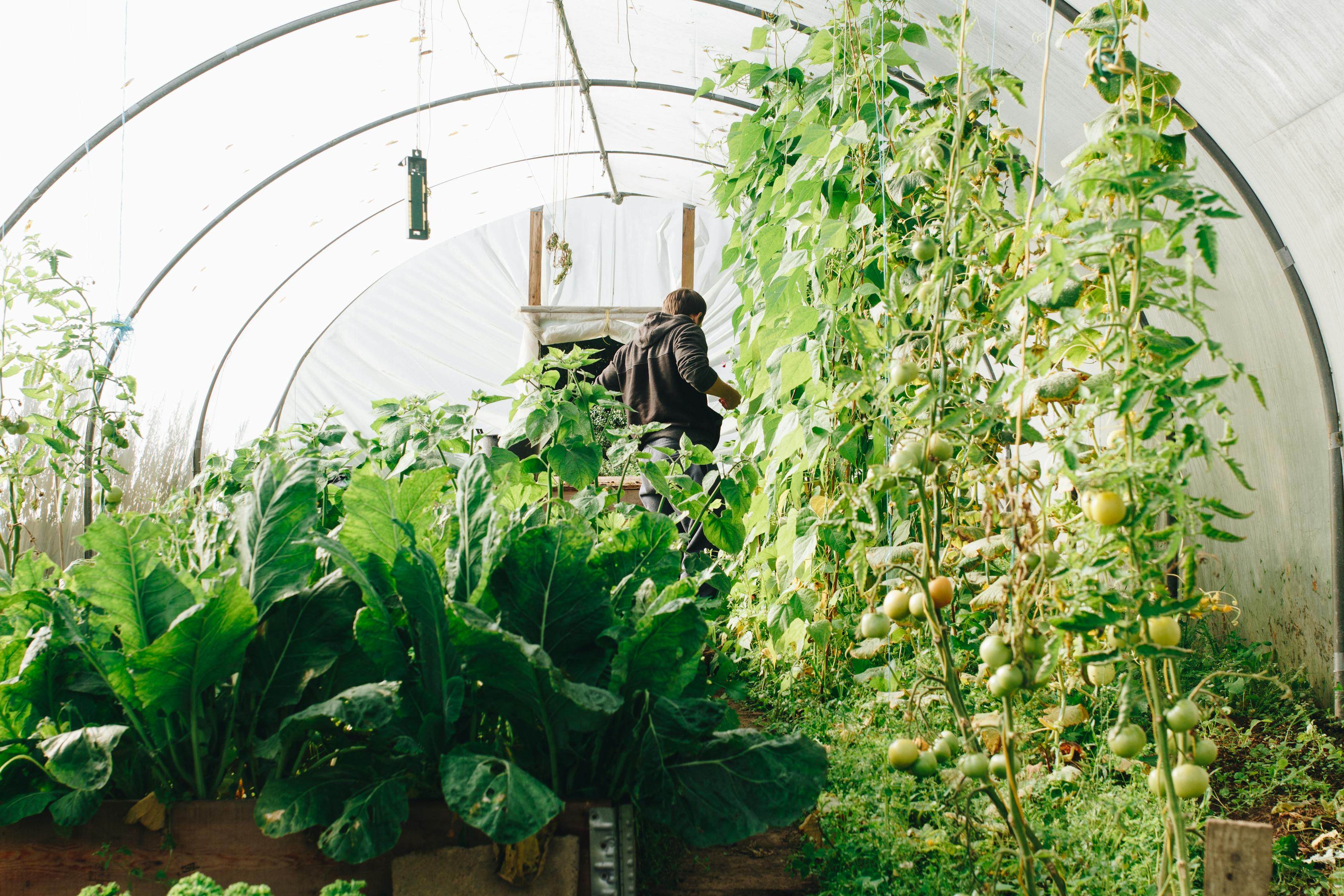Table of Contents
*This post may contain affiliate links. As an Amazon Associate we earn from qualifying purchases.
If you’ve ever considered growing your own food, but you don’t have enough room for a garden or you don’t enjoy getting dirty, then you might consider growing a hydroponic garden. This process could be the wave of the future and eventually how everyone gets their food. To be part of this revolution, you’ll need to know how to build a hydroponic garden.
What Is a Hydroponic Garden?
The term “hydroponic” comes from the Greek. It is a combination of two words, “hydro,” which means water, and “ponics,” which means labor. Even though hydroponic gardens are currently growing in popularity, this is a practice that has been around for thousands of years. Some of the earliest examples of hydroponic gardens can be found in the hanging Gardens of Babylon and the Floating Gardens of China.
In essence, it is the practice of growing food without soil. The practice may have fallen out of popularity for a while, but in the 1950s, scientists once again started experimenting with growing crops without soil. Other countries around the world, including Australia, Germany, and Holland, have been incredibly successful in growing crops using hydroponic methods.
Benefits of Hydroponics

Photo by Quang Nguyen Vinh from Pexels
If you’re considering learning how to build a hydroponic garden to grow your own food, there are many benefits to taking on this task. The first is that crops will grow 30 to 50% faster in water than they do in soil under the same conditions. You’ll also get a higher yield.
As mentioned, this is something that you can do practically anywhere. Thus, if you don’t have space for a soil garden or you live in an area that isn’t conducive to growing crops in the ground, this can be an alternative option. You can make your hydroponic garden as large as your space will accommodate and grow those foods that you want to consume.
Another benefit of hydroponic gardens is that they offer environmental benefits. They use a lot less water than growing food in soil. Even though they are grown in water, it is often reused and recycled. Thus, less is wasted during the growing process. The use of pesticides is also greatly reduced.
How Does Hydroponic Gardening Work?

Photo by João Jesus from Pexels
When you plant crops or seeds in the ground, they use the nutrients that are found in the soil to help them grow. They also need water and sunlight to achieve this task. If they have the optimum conditions, the plants will grow incredibly large and have a high yield that will feed you and your family.
When you are learning how to build a hydroponic garden, you will discover that since the plants aren’t placed in soil, the nutrients the plants need to grow have to be dissolved in water. Depending on the type of garden you’re growing, the roots might be immersed in water, flooded with moving water, or misted with the nutrient solution.
In many cases, hydroponic gardens are grown in controlled environments indoors. The plants may not have access to the sun, but UV lights are usually used to grow the plants. If they are kept inside, this allows for the temperature to be controlled. The plants don’t have to worry about being taken out by adverse weather conditions or eaten by bugs.
Is There a Need for a Hydroponic Garden?

Image by Jatuphon Buraphon from Pixabay
The human population has been growing at a steady rate. With that growth comes expansion and the need for food. To accomplish both of these goals, we need land. Yet not every parcel of land is conducive to growing food. Depending on the crops you are trying to grow, they may require very specific temperatures and amounts of sun. If they don’t get these, they won’t thrive. They also need soil that has the right nutrient levels. If these aren’t present, the plants will probably wither and die.
As crops grow, they strip the soil of nutrients. Once these nutrients are gone, they are incredibly difficult to replace. This will naturally occur over time, but nutrients in the soil can easily be replaced by allowing free-range grazing animals to roam fields that are lying fallow on rotation. The problem is that Big Agriculture doesn’t do this; yet you can do it on the individual level. If you can’t have animals on your properly, then a hydroponic garden is the way to go.
Current Agricultural Practices
Currently, there are many ways we get around agricultural issues with nutrients and pests when it comes to big agricultural concerns. This includes using fertilizers to ensure that plants get what they need to survive and pesticides to protect them from insects. Different plants need different nutrients, and those nutrients that they don’t get used are put back into the soil as crops are rotated from field to field.
Unfortunately, fertilizers and pesticides leach harmful chemicals into the soil and water supply, and these can have an adverse impact on humans, animals, and the environment. Nature can also be incredibly brutal, and extended periods of drought, heavy rains, or freezing temperatures can make growing crops incredibly challenging.
Because of all of these issues, it’s important to find a way to continue to grow crops to feed humanity. There is a need for learning how to build a hydroponic garden beyond the individual level. While the idea hasn’t taken hold yet, it may be something we see occurring in the future.
How to Build a Hydroponic Garden to Grow Food

Until the future is here, you may want to learn how to build a hydroponic garden for your own personal use. If that’s the case, check out the steps below to get started on growing your own food.
Step 1: Decide Where You Will Put Your Garden
One of the great things about a hydroponic garden is that you can grow them anywhere. Whether in an apartment, a greenhouse, or an industrial warehouse: as long as you have the ability to get the nutrients to the plants, including UV light, your garden should grow. Knowing where you want to put your garden will let you know how much space you have.
Step 2: Determine Which Method You Want to Use
The basics of a hydroponic garden are that you don’t need soil to grow food; but there are different options when it comes to getting the nutrients to your plants. These choices include those listed below.
Deepwater Culture
This is probably the easiest method for growing a garden, and you can make it any size you want to fit into your space. For this setup, the plants’ roots are suspended in a nutrient solution. You use an aquarium air pump to oxygenate the solution, which keeps the roots from drowning.
Nutrient Film Technique
For this type of hydroponic garden, you will have nutrient-rich water constantly running over the plant roots. This is accomplished by having two sets of water troughs: the grow tray, the one that the plants sit in, and the reservoir, the container that catches the water as it drains out of the top trough. You will also need an air pump and nutrient pump to cycle the water through the process.
For this set up, you’ll set the growth tray at an angle and let gravity pull the water and nutrients over the plant roots. It will then drain into the reservoir where it will be oxygenated, have more nutrients added, and then be pumped back into the growth tray.
This is an incredibly effective way to grow plants and they will grow fast and large. You can create a system using this technique to fit any size space you have, although it might work better if you have a larger area.
Wicking
This method is a low cost and simple system to set up. You will still have a grow tray and a reservoir, and you will use a material such as cotton rope to deliver the water from the reservoir to the grow tray. You will still need to have an air pump to aerate the nutrient water.
This system works by having the plant roots suspended in water. The wicks move the water from the reservoir tray into the growth tray to keep the roots wet and fed. This system has no moving parts, so it can be easy to maintain. It’s not ideal for plants that need a lot of water as the wicks can’t often keep up with demand.
Ebb and Flow
This system is similar to the wicking system, but instead of relying on cotton ropes or other material to move the water, you have a pump and drain. Again, you will have a grow tray and a reservoir, and the plant roots will be suspended in water.
This system can be great for plants that need a lot of water. You also have the ability to switch plants out or add new ones throughout the growing cycle. There are a lot of different components to this method, but with time and patience, you should be able to get the hang of this system.
Aeroponics
For this method, the roots of the plants get the necessary nutrients through a mist. There are a couple of different ways to accomplish this task, including having a spray nozzle to mist the roots or by using a pond fogger. If you go with the fogger option, you’ll need to have a Teflon coated disc to reduce the amount of maintenance you’ll need to do on your system.
Step 3: Determine What You Want to Grow
When learning how to build a hydroponic garden and after determining where you want to put it, you’ll then need to decide what you want to grow. You have the option of choosing any fruits and vegetables for this task. The type of system you picked to grow your plants may also help you decide which crops you can grow, or you may decide to do more than one system to grow a variety of different plants.
Step 4: Set Up Your Hydroponic Garden
Once you know exactly what you are going to grow and where, you can then set up your garden. Some of the common features you’ll need for each system include nutrients for your plants and an aerator.
When it comes to finding the right nutrients, you’ll need to look for ones that will benefit your plants. Thus, you’ll need to do some research to find out exactly what your plants need to thrive and add that to your system. There are places online for this information, and you might also consider talking to people at a local greenhouse or others who have developed their own hydroponic garden to see what they recommend.
Conclusion
There are many benefits to growing food in a hydroponic garden, and it can be incredibly kind to the environment. You have the option of growing food items such as tomatoes, herbs, lettuces, and beans, among others. What you decide you want to grow will be determined by your personal preference and how much space you have.
In addition to having control over how your food is treated before it enters your body, you will also have the satisfaction of knowing that you were able to grow food and provide for yourself and your family. All of these combined can be reasons why you need to learn how to build a hydroponic garden.
Featured Image: Photo by Jatuphon Buraphon from Pexels

